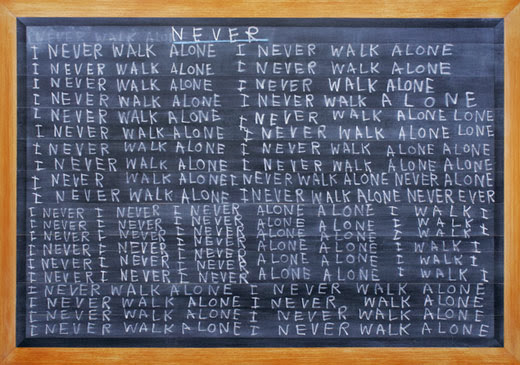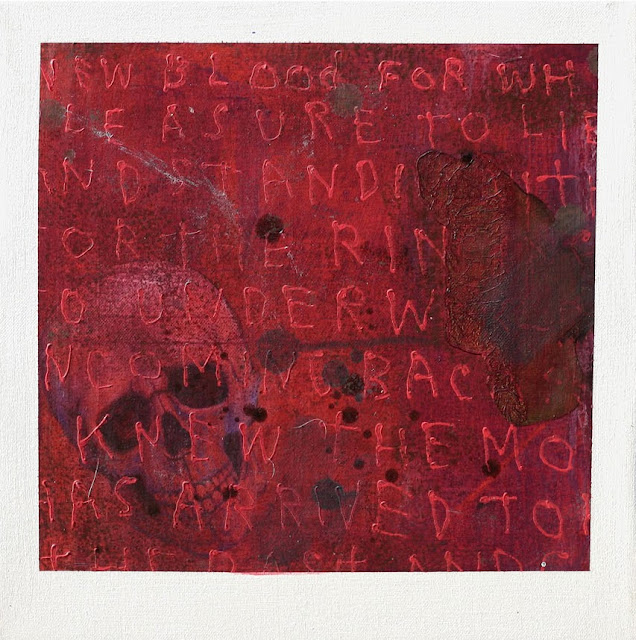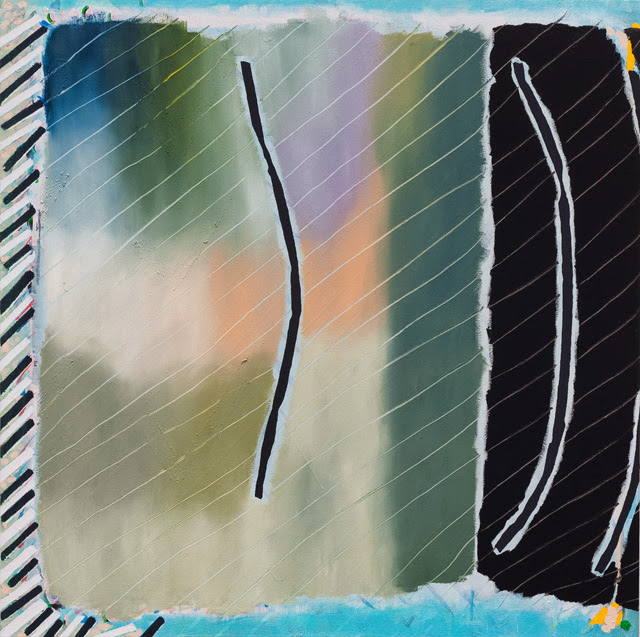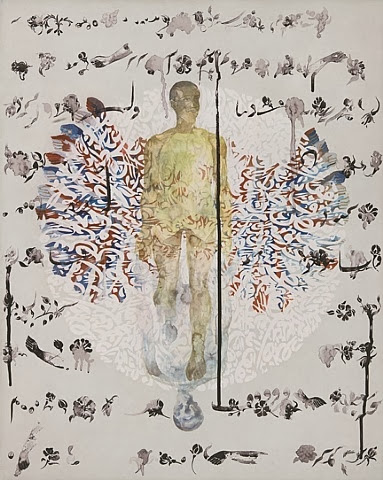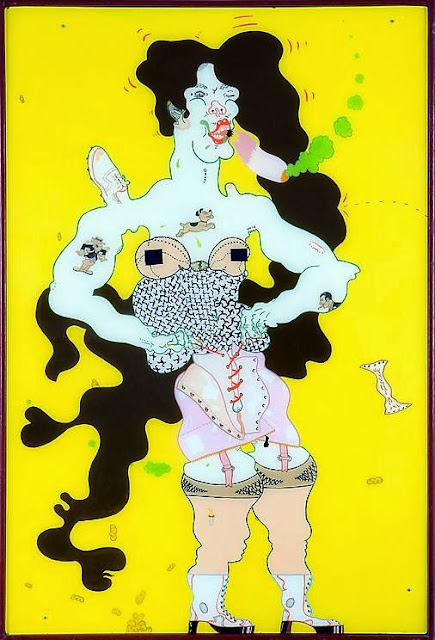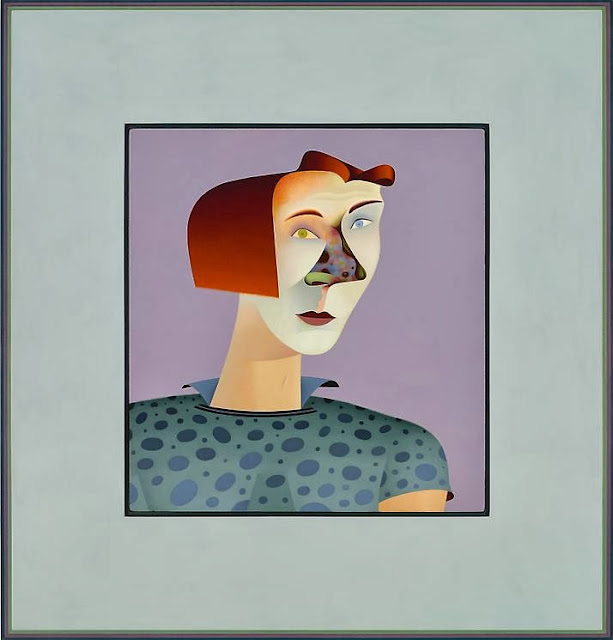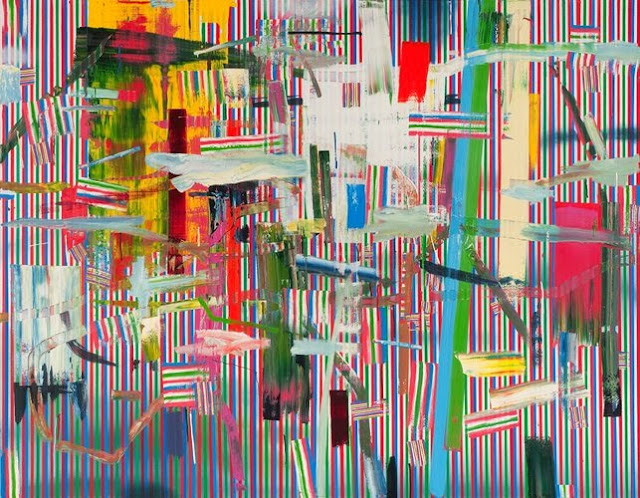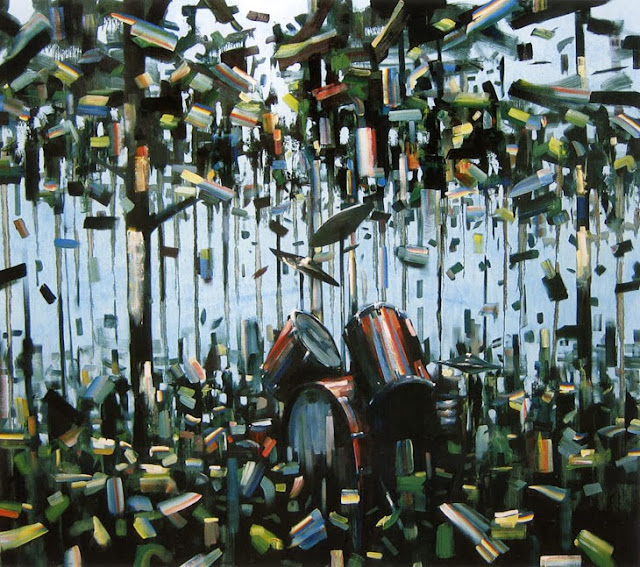 |
| Nothing, 1974, oil on canvas |
 |
| August Waterfall, 2000, photogravure and aquatint |
Formally, she works on a large scale and frequently uses silver, gold, white, and Paynes gray. She puts X's through things which implies a theme of destruction. She says she wanted to destroy images as symbols and that no imagery was the same as endless imagery.
In her waterfall paintings, she pours paint on canvas and allows colors to mix and merge (a wet on wet technique). In her colored abstract paintings, the colors correspond with 5 Buddha families. In fact a lot of her paintings are representative of her interest in Asian, specifically Chinese, art. (The act of paint flowing corresponds to the philosophy of Daoism.)
